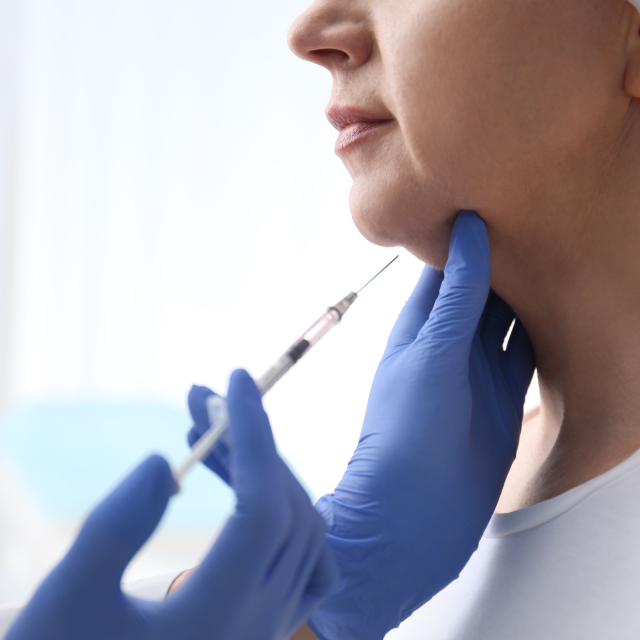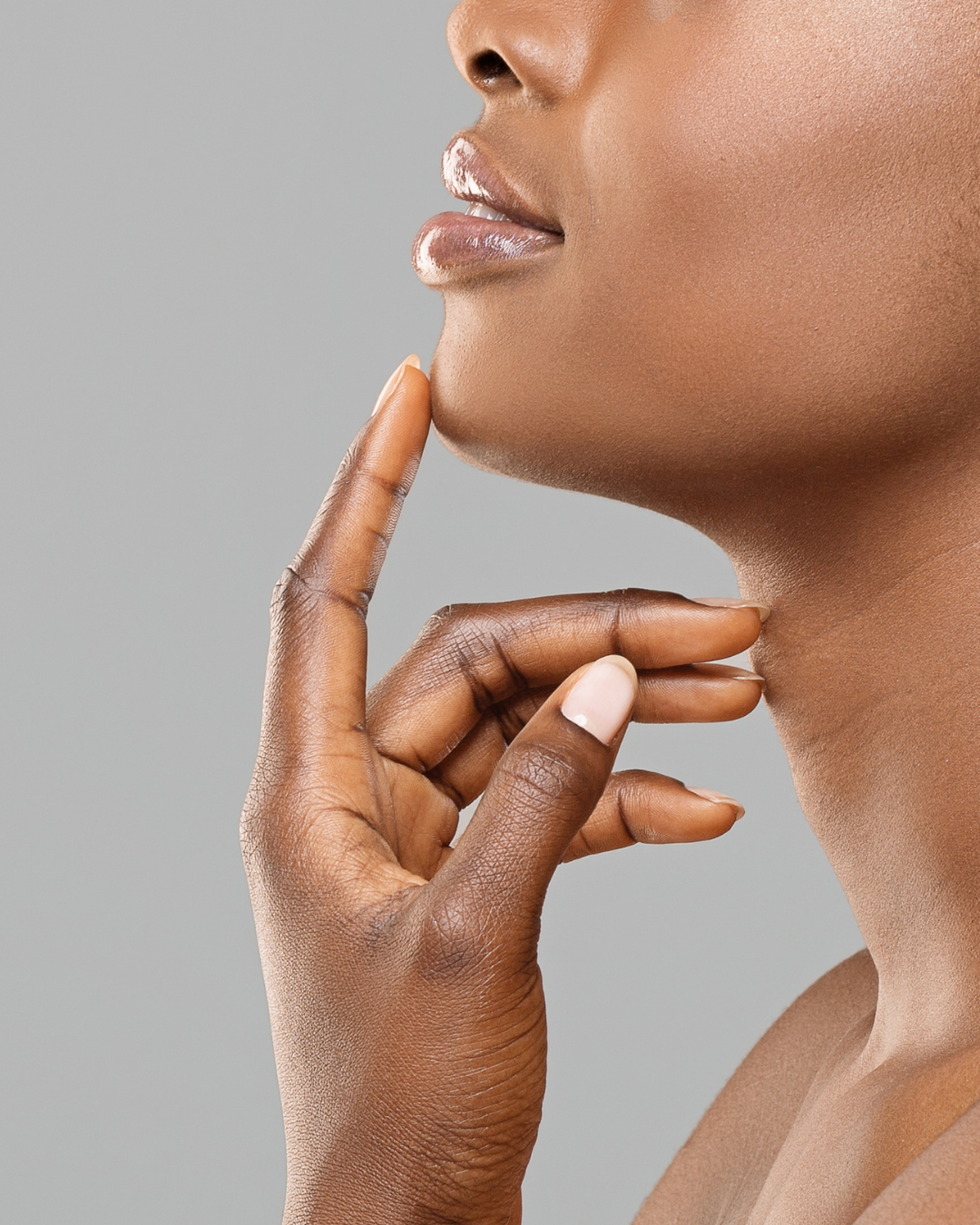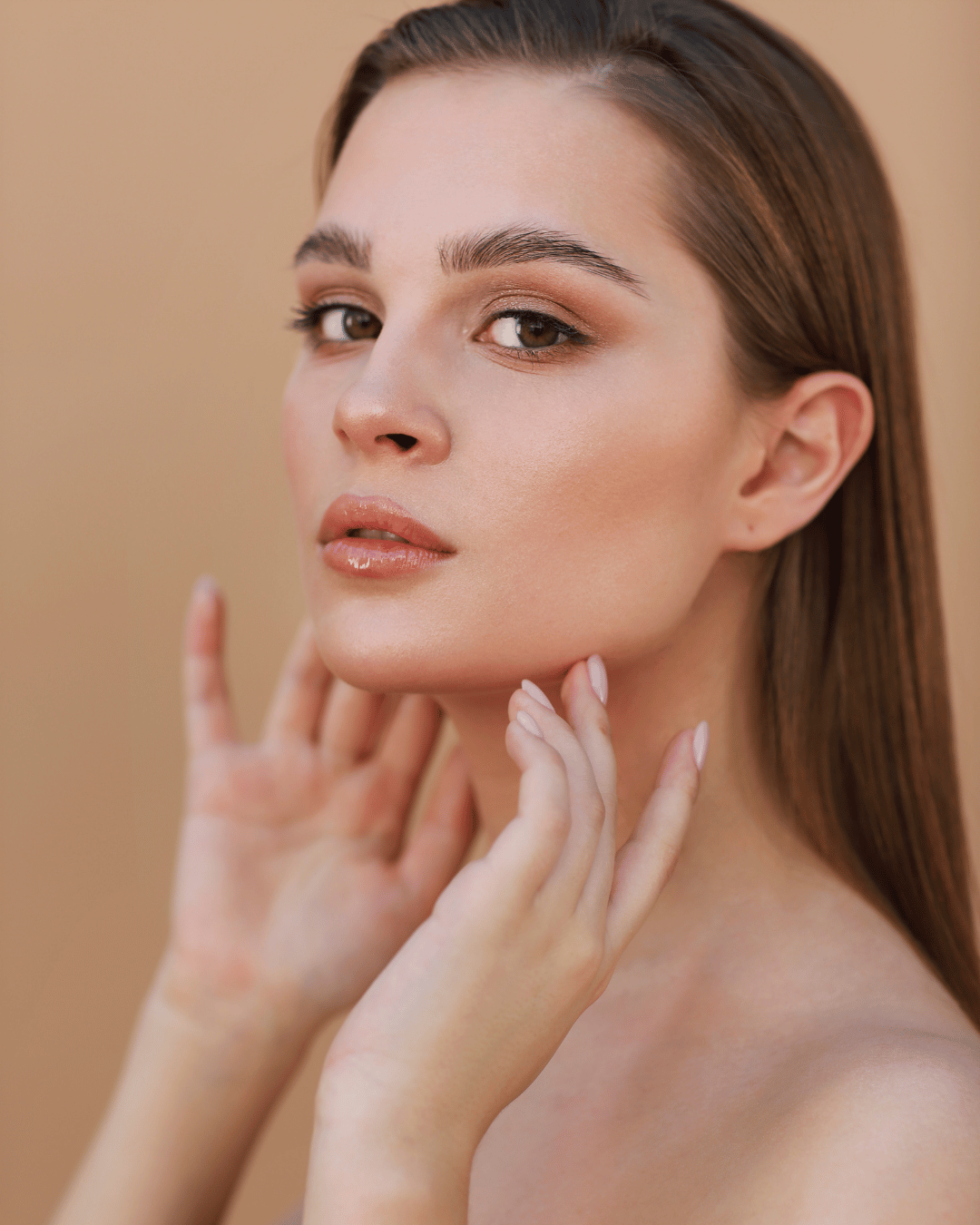
Ageing, excessive fat and genetics can lead to a double chin and less defined jawline. Treatments like Dermal Fillers, Radiofrequency Skin Tightening, and FACEtite effectively enhance jawline contour and reduce sagging for a more sculpted appearance.

A double chin occurs when excess fat accumulates under the chin, leading to a fuller, less defined appearance. This can be caused by various factors, including genetics, ageing, and lifestyle. A poorly defined jawline, on the other hand, may result from a natural lack of bone structure, sagging skin, or excess fat in the area. Both of these issues can detract from an otherwise balanced and youthful face, often making you appear older or heavier than you are.
At SRGN, we understand the desire for a more sharp, well-defined jawline and a slim, contoured chin. Dr Ayad Harb and our expert team use the latest techniques to provide tailored solutions that address these concerns, helping you achieve the facial definition you’ve always desired.
Submental fat, commonly known as a double chin, can be treated effectively with fat-dissolving injections. This non-surgical treatment targets and breaks down fat cells in the chin area, reducing the appearance of a double chin over time.
For sagging skin and a less defined jawline, Ultherapy or radiofrequency skin tightening are excellent options. These non-invasive treatments stimulate collagen production, lifting and tightening the skin for a more defined jawline.
If your jawline lacks definition due to genetics or bone structure, dermal fillers can help sculpt and enhance your jawline, providing a sharper and more contoured appearance.

Submental fat, commonly known as a double chin, can be treated effectively with fat-dissolving injections. This non-surgical treatment targets and breaks down fat cells in the chin area, reducing the appearance of a double chin over time.
For sagging skin and a less defined jawline, Ultherapy or radiofrequency skin tightening are excellent options. These non-invasive treatments stimulate collagen production, lifting and tightening the skin for a more defined jawline.
If your jawline lacks definition due to genetics or bone structure, dermal fillers can help sculpt and enhance your jawline, providing a sharper and more contoured appearance.
Dermal fillers can be strategically placed along the jawline to enhance its shape and definition. This treatment is perfect for those looking to create a more sculpted and balanced facial profile.
Sylfirm X, radio-frequeny tightening is another minimally invasive option that works by stimulating collagen production to firm and tighten loose skin. It’s particularly effective for improving the appearance of the jawline, giving you a more youthful and defined look.
Facetite epitomises the blend of technology and aesthetics. A minimally invasive technique, Facetite employs radiofrequency energy with precision to target the sagging skin and tissues of the face and neck. The heat generated by the radiofrequency promotes collagen production, which in turn tightens the skin.